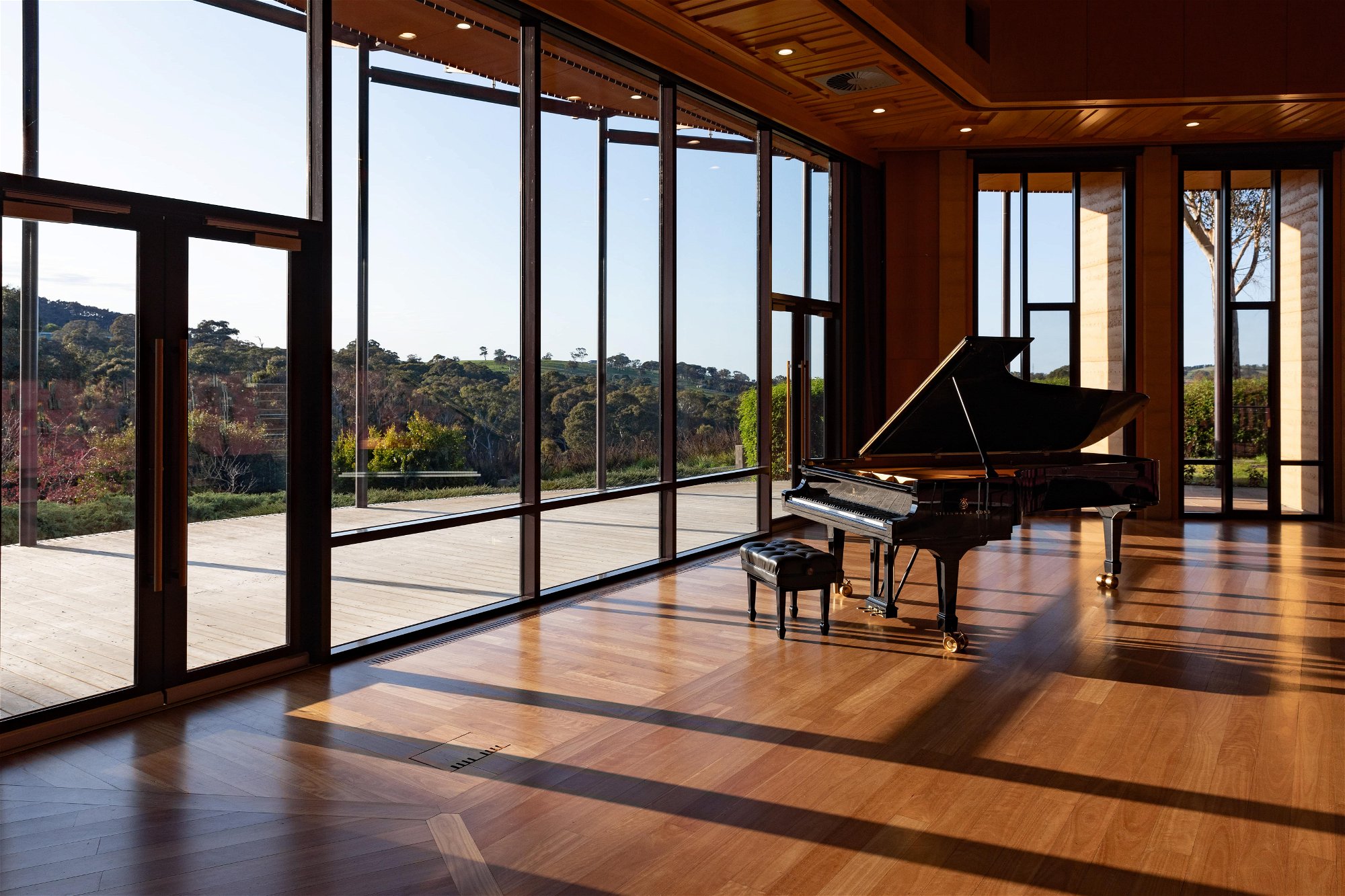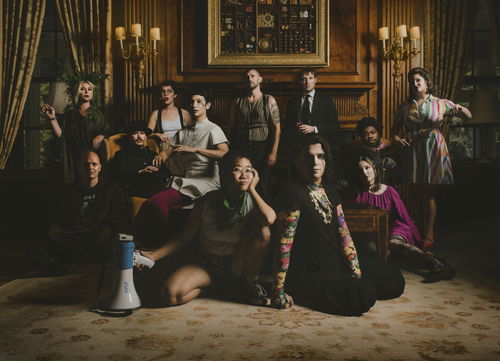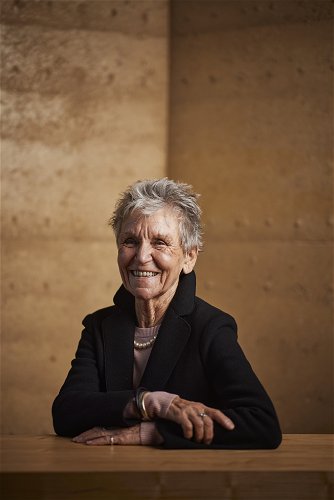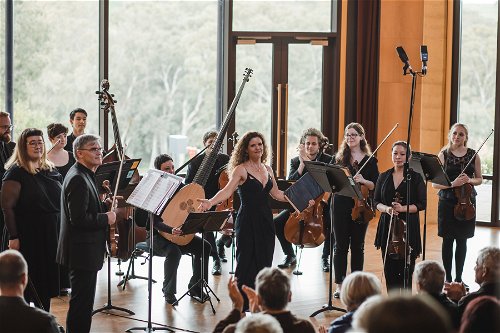
Glass Wall
‘UKARIA’s magical listening space invites us into landscape – the ancient Peramangk Country of the exterior, and the interior of a room designed for contemplation and dreaming.’ – Genevieve Lacey
In much the same way that a landscape is never the same twice, a piece of live music is illuminated in new and unpredictable ways as it interacts with the environment in which it is heard. At UKARIA, light, landscape and the seasonal rhythms of nature become participants in the creation of art, providing an ever-changing canvas upon which our musicians paint masterpieces in sound.
The main feature of the design that sets UKARIA apart from almost any other venue in Australia is its nine-metre wide, four-metre high double-glazed glass wall behind the stage. Precisely orientated by the sight lines to the Mount Barker Summit and its neighbouring Twin Peaks, the view is like something out of a Hans Heysen painting: birds glide between swaying eucalypts all year round, while the uniquely Australian landscape shifts between the golden straw colours of high summer to the rich, green hues of winter. To the southeast, blade walls of rammed earth frame views of the neighbouring Ngeringa Vineyards, heightening the sense of immersion and interaction with the rural sitting.
The transience of the music itself converses with the shifting, fugitive qualities of nature, creating gorgeous moments of serendipity: a silvery mist might blanket the hillside as the music passes from major to minor; a rainbow might appear as the final cadence fills the hall. On rare occasions, a shooting star may even be glimpsed on a clear night.
Even during the daylight hours, a translucent black shade can be deployed at the push of a button to minimise morning glare without compromising the views. The concert hall can also be transformed from an open space flooded with natural light to a black box with a drop-down projection screen, suitable for audio-visual presentations. For jazz or cabaret nights, a 180-degree curtain wraps around the stage, heightening the sense of envelopment and intimacy whilst also absorbing some of the amplified sound.


.jpg?class=grid1)








